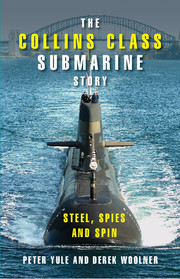Book contents
- Frontmatter
- Contents
- List of key people
- List of acronyms
- Introduction
- Part 1 You Can't Build Submarines in Australia
- 1 ‘The one class of vessel that it is impossible to build in Australia’: Australia's early submarines
- 2 Australia's Oberon class submarines
- 3 The submarine weapons update program and the origins of the new submarine project
- 4 The new submarine project
- 5 ‘We can't build submarines, go away’: Eglo Engineering and the submarine project
- 6 The acts of the apostles
- 7 ‘But how will you judge them?’: the tender evaluation process 1984–85
- 8 Spies, leaks and sackings: from tender evaluation to project definition study
- 9 The project definition study 1985–86
- 10 Debating the laws of physics: picking winners 1987
- Part 2 The Honeymoon Years 1987–92
- Part 3 ‘A Strange Sense of Unease” 1993–98
- Part 4 Resolution
- Notes
- Index
1 - ‘The one class of vessel that it is impossible to build in Australia’: Australia's early submarines
Published online by Cambridge University Press: 05 September 2013
- Frontmatter
- Contents
- List of key people
- List of acronyms
- Introduction
- Part 1 You Can't Build Submarines in Australia
- 1 ‘The one class of vessel that it is impossible to build in Australia’: Australia's early submarines
- 2 Australia's Oberon class submarines
- 3 The submarine weapons update program and the origins of the new submarine project
- 4 The new submarine project
- 5 ‘We can't build submarines, go away’: Eglo Engineering and the submarine project
- 6 The acts of the apostles
- 7 ‘But how will you judge them?’: the tender evaluation process 1984–85
- 8 Spies, leaks and sackings: from tender evaluation to project definition study
- 9 The project definition study 1985–86
- 10 Debating the laws of physics: picking winners 1987
- Part 2 The Honeymoon Years 1987–92
- Part 3 ‘A Strange Sense of Unease” 1993–98
- Part 4 Resolution
- Notes
- Index
Summary
THE NEW SUBMARINES: ARE THERE FATAL DEFECTS?
This headline appeared in the Melbourne Age, not in the 1990s, but on 12 July 1928. It referred not to the Australian-built Collins class submarines, but to the British built O class. In 1925 two of these submarines were ordered for the Royal Australian Navy from Vickers' shipyard at Barrow in the north-west of England. Delivery was 12 months late due to industrial problems and shortages of skilled workers, but the worst problems were not seen until the submarines, Oxley and Otway, had entered the Mediterranean Sea on their way to Australia. Cracks and fractures were found in the diesel engines of both boats, and they were stranded in Malta for eight months.
Inevitably the delay and cost led to debate in Australia. The government and the navy were accused of buying an experimental design that had not been properly tested and of hiding the truth ‘in a fog of mystery’. Official responses were vague and misleading and, failing to quell public concerns, led to ever more extreme claims about the boats' failings. The lack of open and public discussion led to a general belief that the faults were far worse than they really were. Further, the debate was deliberately fanned by leading figures in the navy and the government who were opposed to having submarines at all.
- Type
- Chapter
- Information
- The Collins Class Submarine StorySteel, Spies and Spin, pp. 3 - 10Publisher: Cambridge University PressPrint publication year: 2008



